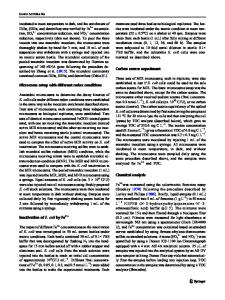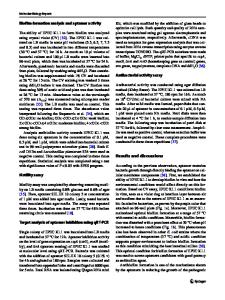Neonatal and young infant sepsis by Group B Streptococci and Escherichia coli : a single-center retrospective analysis i
- PDF / 461,398 Bytes
- 9 Pages / 595.276 x 790.866 pts Page_size
- 99 Downloads / 243 Views
ORIGINAL ARTICLE
Neonatal and young infant sepsis by Group B Streptococci and Escherichia coli: a single-center retrospective analysis in Germany—GBS screening implementation gaps and reduction in antibiotic resistance Maren Doenhardt 1 & Barbara Seipolt 1 & Lars Mense 1 & Jennifer Lucia Winkler 2 & Alexander Thürmer 3 & Mario Rüdiger 1 & Reinhard Berner 1 & Jakob Armann 1 Received: 15 January 2020 / Revised: 24 March 2020 / Accepted: 22 April 2020 # The Author(s) 2020
Abstract The last nationwide surveillance study on neonatal and young infant sepsis due to Group B Streptococci (GBS) and Escherichia coli in Germany was conducted between 2009 and 2010. The aim of this study is to provide longitudinal epidemiological data on neonatal and young infant sepsis caused by GBS and E. coli to reevaluate existing data and to inform clinical decision-making. Every positive blood culture for GBS and E. coli within the first 90 days of life that occurred at our center from 2008 until 2018 was identified. The epidemiological, clinical, laboratory, and microbiological data of all affected patients were analyzed through retrospective chart review, along with the pathogen’s antimicrobial susceptibility results. In total, 106 episodes of neonatal sepsis were described; 31% (n = 33) being caused by GBS and 69% (n = 73) by E. coli; 87% of GBS early-onset disease (EOD) cases did not receive intrapartum antibiotic prophylaxis (IAP). Contrary to general trends, the proportion of resistant E. coli isolates decreased for all tested antibiotics over time. Coincidentally, antenatal antibiotic use beyond IAP during that period decreased significantly in our center. Conclusions: (1) Data at our center suggests at least a regional implementation gap in GBS screening and IAP. (2) The decline in the resistance rate of E. coli for all antimicrobial substances might indicate that the reduction of prenatal antibiotics use is beneficial and that neonatal antibiotic stewardship programs should include pregnant women as well.
Electronic supplementary material The online version of this article (https://doi.org/10.1007/s00431-020-03659-8 ) contains supplementary material, which is available to authorized users. * Maren Doenhardt [email protected]
Reinhard Berner [email protected] Jakob Armann [email protected]
Barbara Seipolt [email protected] Lars Mense [email protected] Jennifer Lucia Winkler [email protected] Alexander Thürmer [email protected] Mario Rüdiger [email protected]
1
Department of Pediatrics, University Hospital and Medical Faculty Carl Gustav Carus, Technische Universität (TU) Dresden, Fetscherstraße 74, D-01307 Dresden, Germany
2
Department of Gynecology and Obstetrics, University Hospital and Medical Faculty Carl Gustav Carus, Technische Universität (TU) Dresden, Fetscherstraße 74, D-01307 Dresden, Germany
3
Institute of Medical Microbiology and Hygiene, Medical Faculty Carl Gu
Data Loading...











